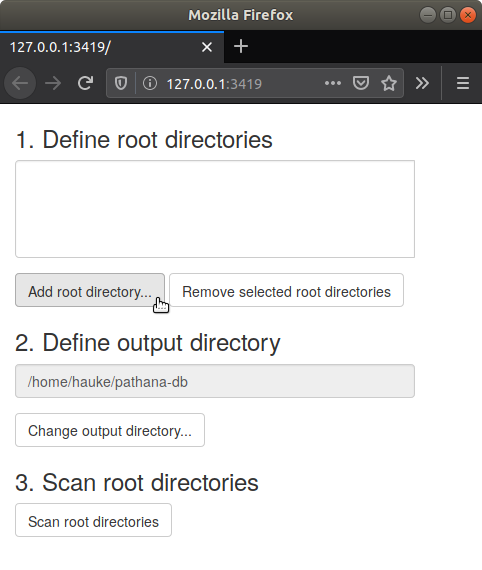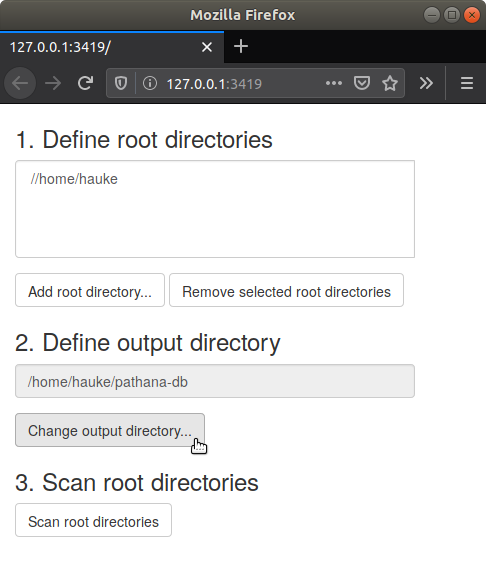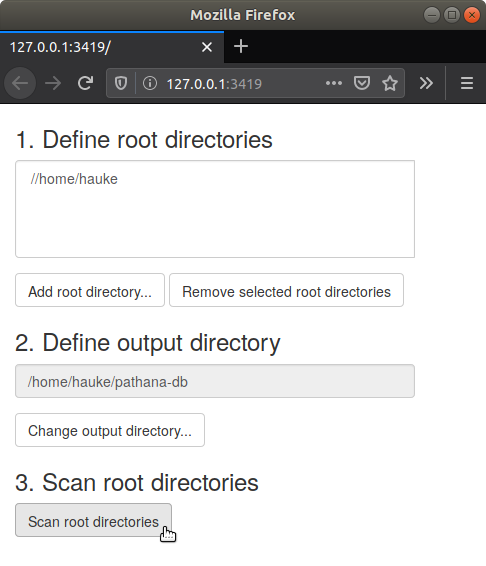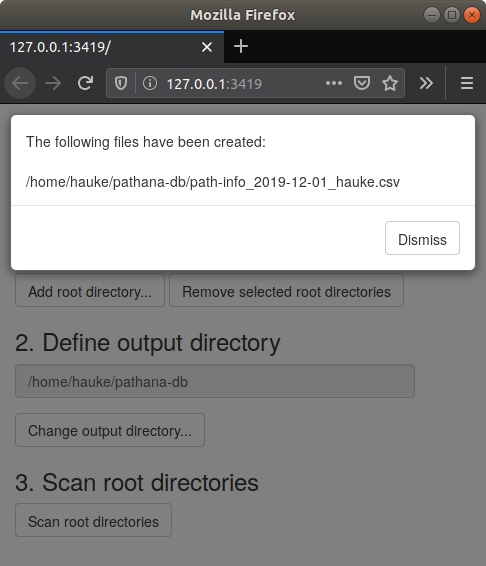Once you have installed the package fakin.path.app and all related packages, you are set up to
Scan your file system for file paths and file properties and save them to CSV files (CSV = Comma Separated Values),
Run the Web Application to analyse the path information produced in the first step.
Application 1: Scan your file system
Run the following R command to start the application that scans your system for files to be analysed:
fakin.path.app::run_app_scan()This will open a new tab in your default web browser as shown here for a Mozilla Firefox browser on an Ubuntu Linux system:

Main window of the scan app
The main window is devided into three sections representing the steps required to start the scan process:
- Define root directories
- Define ouput directory
- Scan root directories
In the first step you define one or more root directories that act as the starting point of the scan. The search is done recursively, i.e. files in all folders and subfolders will be considered. Take this in mind when selecting a root directory. It can take a long time to scan a “top-level” folder! Click the Button “Add root directory…” to select a root directory:

Select a root directory
In the opening dialog window, use the left-hand pane to navigate to
the folder that you want to scan. Select the folder by clicking on its
name (hauke in the example). The contents of the folder are
shown in the right-hand pane. Confirm your selection by clicking the
“Select” button. This closes the dialog window and enters the path to
the selected root directory (here: /home/hauke) in the text
field on top of the main window:

After selecting a root directory
In the next (optional) step you can set the output directory,
i.e. the location where to store the results of the scan. You may use
the default (/home/hauke/pathana-db in the example) or
select another location by clicking “Change output directory…” and
selecting a different folder (similar to selecting a root
directory).
Once the root and output directories are specified, you are ready to start the scan process. Therefore, click the “Scan root directories” button…

Start the scan process
… and wait until the scan has been completed.

Wait for the scan to be completed
The completion of the scan is indicated by a message box stating that the information on the scanned files have been written to a CSV file in the output directory:

Message after successful completion of the scan
Close the message box by clicking the “Dismiss” button.
Now, that the result of the scan is available in a CSV file you are ready to run the application that helps you to inspect and analyse this file. Before you run this second application, close the current application by pressing ESC in the R console or by closing the corresponding tab in the web browser.
Application 2: Run the Web Application
# Set the path to your personal "path database" (a folder containing files as
# e.g. generated )
fakin.path.app::run_app()